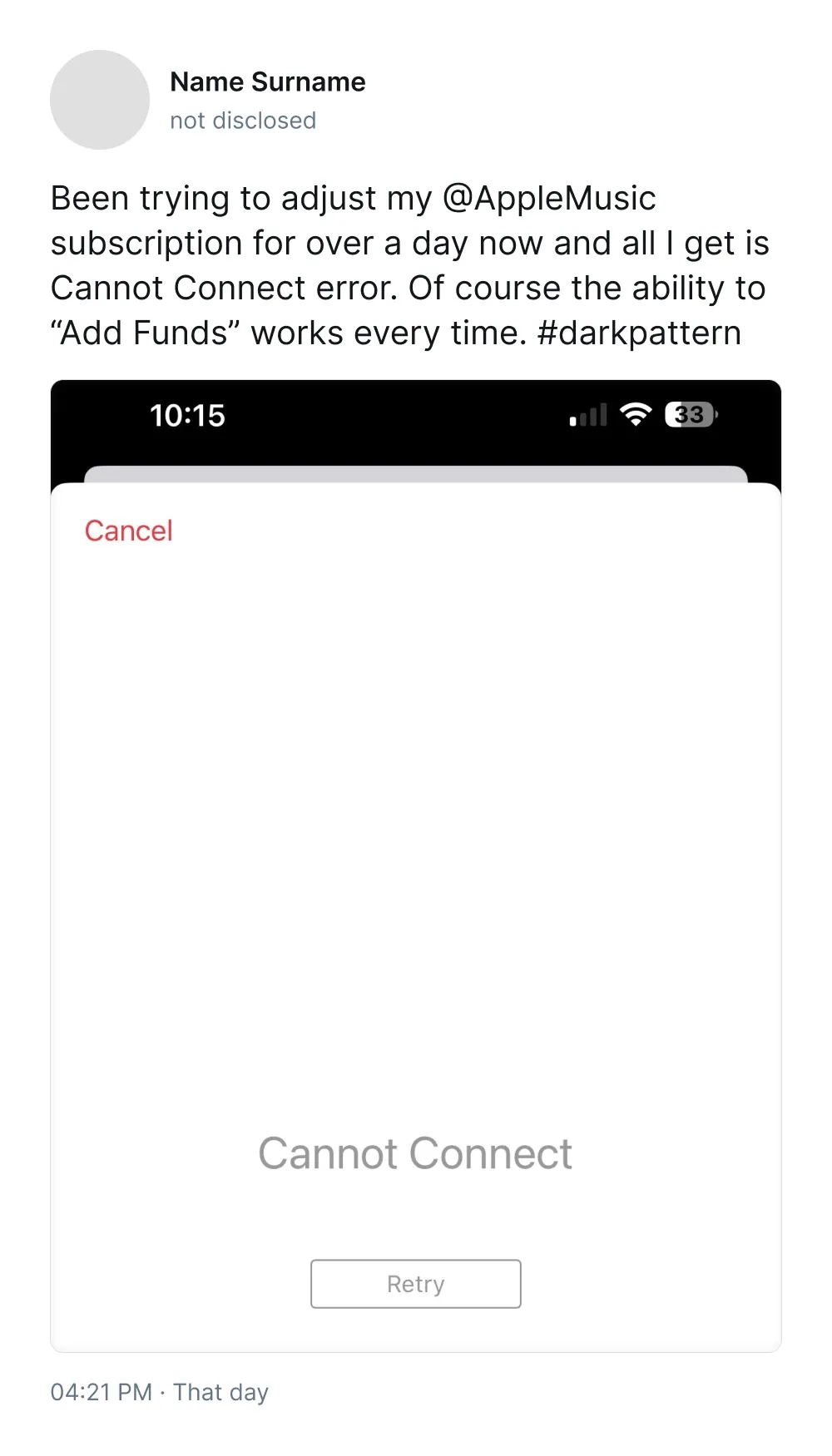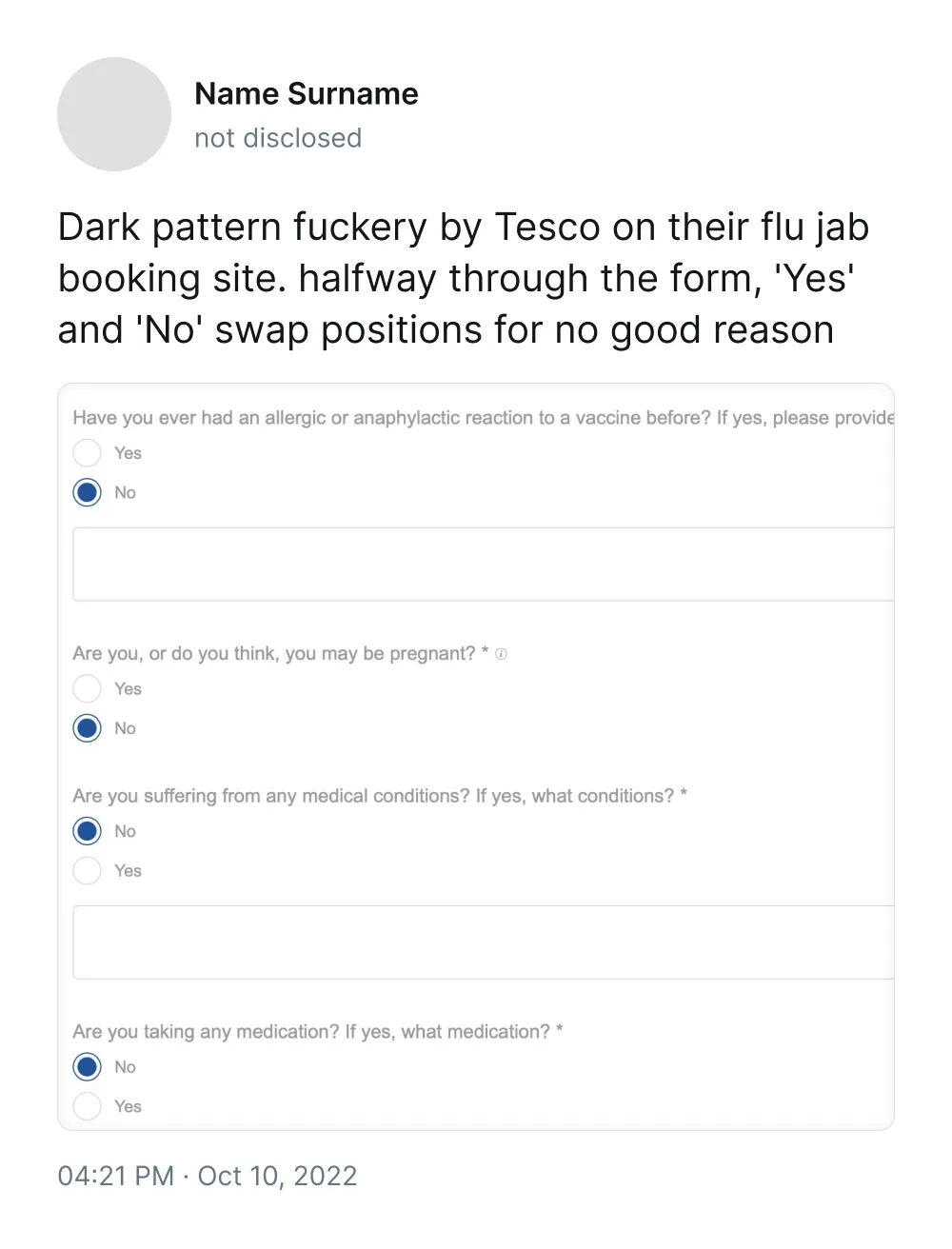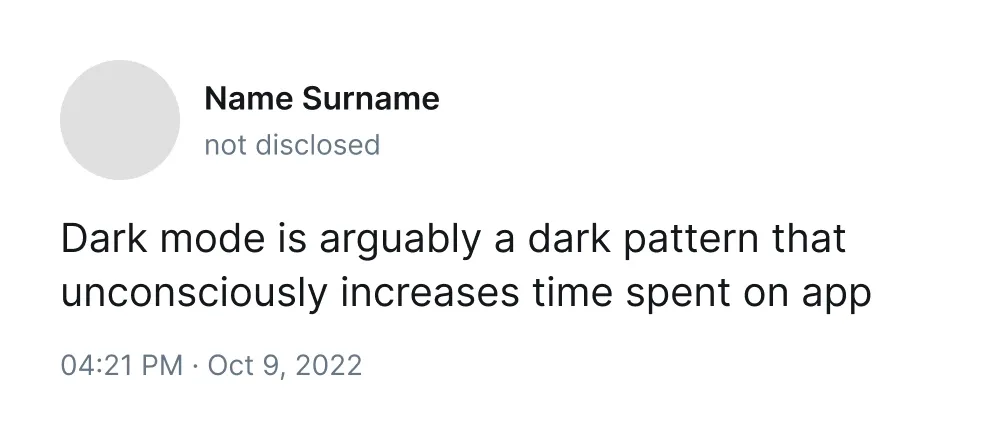It's essential to recognize the existence of dark patterns in design, but it's also crucial to understand what elements and UI behaviours are not considered dark patterns.
As we strive to identify dark patterns, we may come across certain examples that we believe should not be classified as such. These examples may be better characterized as poor design choices. In this thread, we aim to provide explanations for why the examples we've found do not qualify as dark patterns and should instead be viewed as design flaws.
We will post anonymously to keep the focus on the examples themselves.
Is this error a dark pattern?

🛑
Why is this not a dark pattern?
Errors are an unfortunate aspect of the software, and it's not always a dark pattern. In this case, it appears that this is an isolated incident and not a repeatable pattern of tricking the user. The comparison would be with a dark pattern such as "Sneak into Basket," where a website/app always adds additional items to the user's cart during the purchase.
Furthermore, there is no evidence that errors on this page appear more frequently than on any other page, preventing users from cancelling the Apple Music service, and it would fall into the "Roach Motel" dark pattern category.
Errors are an unfortunate aspect of the software, and it's not always a dark pattern. In this case, it appears that this is an isolated incident and not a repeatable pattern of tricking the user. The comparison would be with a dark pattern such as "Sneak into Basket," where a website/app always adds additional items to the user's cart during the purchase.
Furthermore, there is no evidence that errors on this page appear more frequently than on any other page, preventing users from cancelling the Apple Music service, and it would fall into the "Roach Motel" dark pattern category.
A questionnaire with swapped "Yes" and "No" is a dark pattern?

⁉️
Why is this not a dark pattern?
At first glance, this form may appear to use the "Misdirection" dark pattern. The placement of Yes/No answers in the four questions is confusing and causes users to spend more time than necessary to complete the form. However, for this to be considered a dark pattern, the company should benefit from this action in some way, such as through data collection or financial gain.
In this case, it appears that the form is simply a regular questionnaire and the placement of the Yes/No answers is not meant to benefit the company in any way. This is merely a case of poor user experience, and Tesco does not gain anything from it.
At first glance, this form may appear to use the "Misdirection" dark pattern. The placement of Yes/No answers in the four questions is confusing and causes users to spend more time than necessary to complete the form. However, for this to be considered a dark pattern, the company should benefit from this action in some way, such as through data collection or financial gain.
In this case, it appears that the form is simply a regular questionnaire and the placement of the Yes/No answers is not meant to benefit the company in any way. This is merely a case of poor user experience, and Tesco does not gain anything from it.
Is dark mode considered a dark pattern?

🌒
Why is this not a dark pattern?
Dark mode has become increasingly popular after its introduction by Apple and Google on iOS and Android. Before its introduction, users would simply decrease the brightness on their phone to continue using it at night.
However, there is no evidence to suggest that the introduction of dark mode has led to an increase in smartphone usage. It is simply a convenient way to consume content at night. Popular entertainment apps such as TikTok and Instagram (Reels) do not even require a dark mode to keep users engaged as they display fullscreen content that makes the interface less prominent. This highlights that if the content is engaging, people will spend time on the website or app regardless of the presence of a dark mode.
As an additional note, we have also added a dark mode to Hallofshame.design for your convenience when reading it at night.
Dark mode has become increasingly popular after its introduction by Apple and Google on iOS and Android. Before its introduction, users would simply decrease the brightness on their phone to continue using it at night.
However, there is no evidence to suggest that the introduction of dark mode has led to an increase in smartphone usage. It is simply a convenient way to consume content at night. Popular entertainment apps such as TikTok and Instagram (Reels) do not even require a dark mode to keep users engaged as they display fullscreen content that makes the interface less prominent. This highlights that if the content is engaging, people will spend time on the website or app regardless of the presence of a dark mode.
As an additional note, we have also added a dark mode to Hallofshame.design for your convenience when reading it at night.
